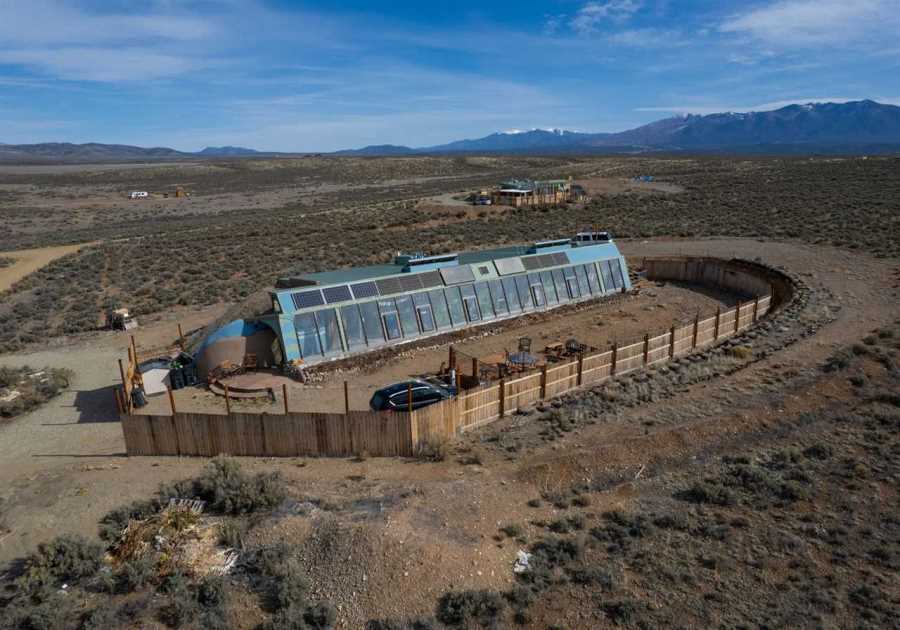Senate Bill 79 will override local zoning to allow the construction of housing near transit in major counties across the state. YIMBYers are calling it a win, but opponents have a less favorable outlook.
It’s been called a game changer and the YIMBY Holy Grail, a reference to both the pro-housing movement that has become a force in local and state politics in recent years, and the expected impact it will have on housing production in infamously expensive California cities. Senate Bill 79 has also been labeled a destroyer of neighborhoods, usurper of municipal political power, and a ticking time bomb that will wreck local infrastructure.
Now, in a highly anticipated decision, Governor Gavin Newsom has signed the bill, which offers a targeted example of what’s called transit-oriented development. Real estate developers will be allowed to build taller, denser residential buildings near high-volume transit lines, with the idea being that nearby access to transit will decrease the need for cars and additional parking while adding a significant number of housing units. Here’s what to know about SB 79.
What is SB 79 and how did it come about?
Repeatedly reworked and moderated during its contentious path through the state legislature, SB79 will upzone areas around major transit stops (rail or bus rapid transit stops), overruling local laws limiting building heights and density. In eight urban counties across the state, mostly in the Bay Area and Southern California: San Francisco, San Mateo, Santa Clara, Alameda, Sacramento, Los Angeles, San Diego, and Orange, buildings sites within a half-mile of such a stop can build 80 units an acre, up to a height of 55 feet, with more height and density for buildings closer to the station, up to 95 feet tall and 160 units an acre.
YIMBYs have celebrated the law as an antidote to the glacial pace of housing construction in the state. Advocates point to the slow progress of cities in zoning for more housing or getting anywhere close to meeting state-mandated housing goals—known as the Regional Housing Needs Allocation, or RHNA—as a reason why the state needs to overrule local control.
"I believe SB 79 would address that issue in a very meaningful way by really opening up a lot of capacity for mixed-income housing and affordable housing around transit stops, land that historically mixed-income housing and affordable housing is not allowed to be built on," says Mahdi Maji, Director of Policy at Inner City Law Center. "It’s important housing is built in areas where people have historically been excluded."
Since it passed, what does that mean?
There aren’t exact figures or estimates on how many such projects will get completed in the first few years; labor and material costs, financing, and the ways the law gets interpreted locally will impact the initial wave of development. But it’s likely to be seen as a significant YIMBY victory, and a source of consternation and pushback for local government and many residents opposed to the plan.
"If you pass a law like this, you don’t get housing on every eligible parcel overnight," says Brian Hanlon, president and CEO of California YIMBY. "But the end goal here is to build a ton more housing to make California affordable, so folks don’t have to wake up every morning with a pit of anxiety in their chest, wondering if this is the day they order a U-Haul to Arizona. We want people who live here to be able to build a future here."
The most significant change is that SB 79 will allow development in areas and neighborhoods previously meant just for single-family housing. Detractors have been vocal, especially in Los Angeles. Mayor Karen Bass and the City Council—on an 8-5 vote—opposed the bill on the grounds that it negates local zoning control and shoehorns density into inappropriate areas.
Assemblymember Rick Chavez-Zbur, a Los Angeles Democrat who represents portions of Santa Monica, Beverly Hills, and Hollywood, summed up many constituent’s feelings when he told CalMatters, "This blunt, one-size-fits-all bill will not work for a district like mine. For many Californians, living in a single-family neighborhood fulfills a lifelong dream—the American Dream."
How much housing could this add?
There aren’t exact figures yet—Hanlon estimates it could mean hundreds of thousands of units over the next decade—but the main advantage of this bill is that it gets rid of zoning distinctions that made previous changes less effective. For instance, municipalities across the state already have local programs to develop denser housing near transit. In Los Angeles, the Transit Oriented Communities (TOC) program provides incentives to build more near transit.
However, it’s severely limited; it doesn’t allow for building in the three-quarters of Los Angeles that is zoned for single-family homes. SB 79 allows for more density in more places, and that means a much higher ceiling in terms of total units produced. California YIMBY estimates that if 10 percent of the housing allowed by SB 79 were built out in L.A., it would cover roughly two-thirds of the city’s housing shortage (now at roughly 270,000 units).
Why California needs more housing
State data shows the cost of housing in California continues to rise; since 2020, rent is up 30 percent or more in many parts of the state, monthly mortgage payments average $5,900, and houses cost twice as much as they do in other parts of the country. Citizens and cities pay the price, including financial hardships, lower local tax revenue, increased homelessness, and even decreased political representation nationally, as population declines impact Congressional delegations. And cities have struggled to build more units. Take Los Angeles, where housing permits hit a 10-year low last year. While New York City might build 50,000 homes in 2025, Los Angeles has only permitted 3,100 as of July, per CalMatters.
The bill’s passage also provides a boost to public transit, which has weathered significant pandemic-era ridership drops. It would boost ridership by adding more potential customers near transit stops, and allow for development on land owned by transit agencies, offering additional sources of revenue.
Has a bill like this been proposed before?
Democrat State Senator Scott Wiener, a progressive San Francisco representative, has been a YIMBY champion for years, and has repeatedly tried to pass laws like SB 79 since 2018. This is the first time he’s been able to get the legislation out of the Senate, passed in the State Assembly, and signed by the Governor, a feat that in part was due to his ability to compromise (the bill went through 13 changes before final approval, including the use of only high-frequency transit stops, and limiting building to mostly urban, not suburban, counties.)
Wiener has long seen the housing challenge as central to so many other issues facing California, saying in a statement after SB 79 was passed in the legislature, that "decades of overly restrictive policies have driven housing costs to astronomical levels, forcing millions of people away from jobs and transit and into long commutes from the suburbs.
What happens next?
The law is set to go into effect beginning on July 1, 2026. Signing the bill into law will bolster Governor Newsom’s case that he has taken the housing crisis seriously and taken bold steps forward to fix the state’s more potent policy issue.
In the interim, final maps of the areas that would be impacted by SB 79 need to be created by relevant local authorities, such as the Southern California Association of Governments. In debates around the bill’s passage, local government posted maps with the asterisk that these weren’t final determinations of where SB 79 projects would be built, leading opponents to cry foul; there’s sure to be strong pushback around the creation of the final maps. Many housing advocates across the country will likely be watching to see how SB 79 ultimately works in practice to pass similar bills in statehouses across the country.
Top photo: Adobe Stock
–
Related Reading:
Chicago Just Agreed to Allow More ADUs—With Some Caveats
The ADU Boom Has Begun. Is It Adding the Housing We Need?
Read More
By: Patrick Sisson
Title: Gavin Newsom Just Signed a Divisive Housing Bill for California. Here’s What to Know
Sourced From: www.dwell.com/article/what-to-know-about-california-housing-bill-sb-79-gavin-newsom-b7fa556c
Published Date: Fri, 10 Oct 2025 20:56:47 GMT
Did you miss our previous article...
https://trendinginbusiness.business/real-estate/mortgage-originations-could-jump-13-reach-227t-in-2026
.png)





